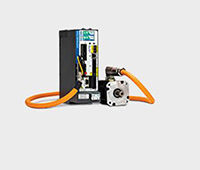By Michael Jermann, Assistant Editor
Students from the University of California, Irvine used DryLin T profile rail guides donated by igus as part of The Geared Turbofan Project, designed to study the noise attenuation effects of a hybrid wing-body in relation to the placement of an aircraft’s turbofan. The students are part of UCI’s Aeroacoustic Laboratory, which aims to study the acoustics of aerospace technologies such as fans, nozzles, ducts and more.

This particular experiment placed a noise-shield under an aircraft turbofan to measure the attenuation of noise in the downward direction. Traditional aircraft have a main fuselage, two large wings, and engines mounted below the wings. Most of an aircraft’s lift comes from the two wings and the engines mounted below them, which are traditionally unshielded. The hybrid wing-body design, also known as a blended wing body, features a fuselage that blends directly into the wings. The design creates less “deadweight” surface area, which prevents the aircraft from losing lift or dragging. Another advantage, currently under study at the lab, is the attenuation in downward noise. When the engines installed above the fuselage use a noise-shield, it is quieter for people on the ground.
To study the effects of the noise-shield, a small-scale model of the geared turbofan engine was built and tested in an anechoic chamber. To simulate the presence of the fuselage below the engines, a simple noise-shield was made in the shape of the HWB planform. The shield itself is made from 1⁄8 in. thick aluminum sheets and is nearly 6 ft long from wingtip to wingtip to match the scaling of the nacelle and fan.
The noise-shield is mounted using DryLin T profile rail guides and manual clamp carriages. The linear guide system makes it possible to study the noise attenuation effects of the turbofan placement relative to the backend of the shield. The manual clamp carriages are bolted onto the metal fixture holding the turbofan assembly, which enables the noise-shield to slide forward and backward in relation to the nacelle with ease.
If a simple bar of metal had been used, the shield would have needed to be detached from the bar and then reattached at a different location with screws and nuts. The DryLin rail and carriages allow easy movement of the shield, which eliminates the risk of screws falling. It also allows the shield to move at very small increments, which expands the scope of the study.
Igus
www.igus.com
Filed Under: MOTION CONTROL





Tell Us What You Think!